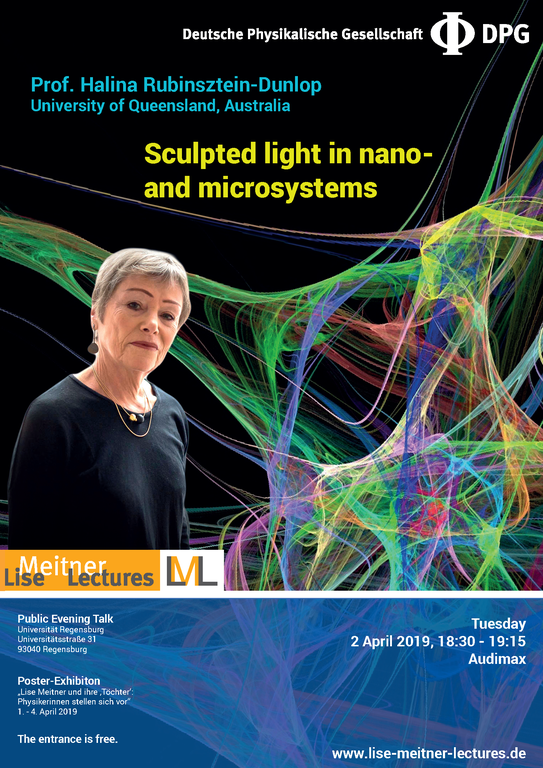Sculpted light in nano- and microsystems
Lise-Meitner-Lectures 2019 im Rahmen der DPG-Frühjahrstagung in Regensburg
- Date:
- Tu, 02.04.2019 18:30 – Tu, 02.04.2019 19:15
- Speaker:
- Prof. Halina Rubinsztein-Dunlop, University of Queensland, Australia
- Address:
- Universität Regensburg
Universitätsstraße 31, 93040 Regensburg, Deutschland
Audimax
- Language:
- English
- External Link:
- http://www.regensburg19.dpg-tagungen.de
Description

Use of spatial light modulators enables unprecedented control and highest versatility of light and its forms. Light can be now structured or sculpted in such a way that it enables control of matter and studies of light matter interactions in many fields of at scales ranging from nano to microsystems, from quantum physics to complex biological systems.
A light beam can exchange both linear momentum and angular momentum with a microscopic object. Methods based on these two phenomena promise high flexibility and an opportunity for driving these objects in microfluidic devices or inside a biological cell or developing methods that enable manipulation of large biological objects in vivo and combining it with optogenetics. It also allows production of flexible optical potential for use in quantum atom optics.
The use of the angular momentum of light enables introduction of controlled rotation of microscopic objects. Quantitative measurements of this rotation are possible through a measurement of the change of polarisation state of light after passing through the object. The transfer of the angular momentum can then be used for several applications in biology and medicine. One of such application is microrheology of complex fluids that exhibit both viscous and elastic behaviours. The use of orbital angular moment presents further advantages in creating highly controllable devices as for example bio-analogues.